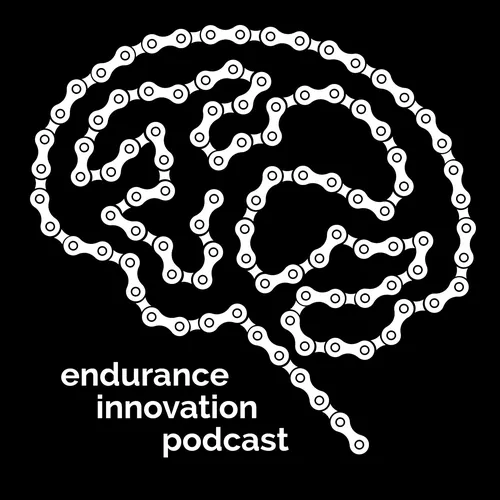Mario Schmidt-Wendling on Heat Training
- Author
- Michael Liberzon
- Published
- Thu 29 Jul 2021
- Episode Link
- https://zencastr.com/z/nY9AxJx-
Endurance Innovation is now on Patreon! Have a peek at our page and show us some love.
- 3:00 how hot Frankfurt races helped promote innovation in thermal stress management
- 7:00 the effects of heat on performance
- 8:45 the role of sodium in maintaining blood plasma volume during exercise
- 11:15 optimal sodium, liquid, and carb intake in racing
- Carbs as much as possible. But this must be trained!
- Liquid intake should be ~65% of plasma volume lost in sweat up to 1L / hr
- 15:00 assessing sweat rate
- 18:45 assessing sodium concentration in sweat
- 22:00 advice for replacing sodium lost
- Focused on the bike leg in long course
- Aim for replacing 80% of sodium lost after the bike leg
- Logistics of replacing sodium: in fluid vs other sources
- 30:00 sodium preload (before the race) advice
- 750mg - 1000mg of sodium the night before a race and the same amount again on race morning
- 34:30 the effect of sodium and caffeine loading core body temperature during a temperature ramp test
- Caffeine can increase core temp more rapidly
- 41:00 the case for heat adaptation training
- Who is heat adaptation for?
- Confidence building for folks who have struggled in the heat in the past
- Anyone looking to improve performance through blood plasma volume increases
- Can replace altitude training
- Who is heat adaptation for?
- 45:15 Mario’s protocol for heat adaptation training
- each block is 5-8 days in duration, with 4-5 heat stress sessions
- Recovery or base intensity only, no high intensity training
- Can travel to a hot area or do it at home
- If at home:
- 25-28C ambient, no fan
- Increase body temperature in the last 20’ by putting on warm clothing or stopping drinking
- After the workout, hit the sauna or a hot bath with 38-40C water for 15-20’
- Repeat a heat block every 5-6 weeks in the early season
- No closer than 10 days before a key race
- 52:30 advice for non-heat block training
- Avoid the heat for training whenever possible
- Lower intensity if training in hot conditions
- Do quality / high intensity work when its cool
- 55:15 using the Core body temp sensor in training: the heat threshold ramp test
- 5’ @ 55% of FTP in a 27-28C room with no fan
- Add 8% of FTP every 5’
- Stop increasing wattage when core temp reaches 38.5C
- Then modulate wattage to keep core temperature as close to 38.5C as possible
- Stop test once power declines by 15% from maximum attained
- Add 0.3C to 0.6C to maximal temperature achieved to determine thermal threshold temperature
- 1:03:00 subjective core temperature experiments
- 1:03:45 using the Core sensor in racing
Learn more about Mario and Sisu Training on the web, Instagram, and Facebook.
